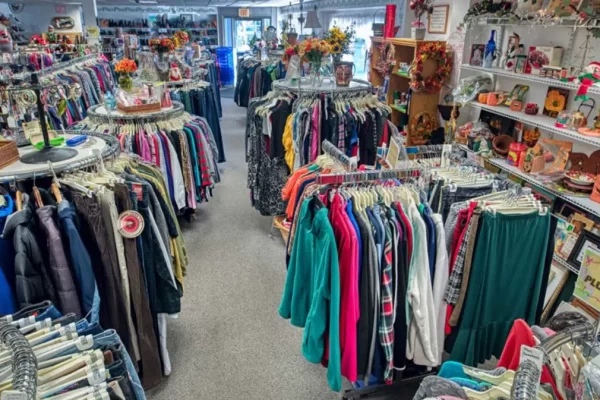Embarking on the journey into the world of fashion live selling is like stepping onto a high-wire. On one side, you’re balancing the pull of maintaining a genuine and relatable brand personality. On the other, you grapple with the push to generate revenue and drive sales. This careful balancing act has become crucial in the fast-paced, increasingly digital fashion retail landscape. Our exploration today centers on this delicate equilibrium, aiming to equip you with beneficial insights and strategies.
Live Selling in Fashion
Live selling, an innovative sales approach, is seeing a rapid surge in the fashion industry. It can be likened to an online stage where fashion retailers parade their offerings in real-time, creating a shopping experience that’s highly interactive and personal.
The unique dynamics of this selling environment—being live and direct—bring a fresh layer of complexity to the art of salesmanship. With platforms such as TikTok e-commerce leading the charge, live selling has dramatically shifted the fashion retail landscape, challenging sellers to innovate their approach and embrace new strategies.
Authenticity in Live Selling
As live selling continues to gain momentum, authenticity emerges as a critical component. It’s the magnetic force that attracts and retains customers, building a solid foundation of trust. In the lively, real-time universe of live selling, a fashion brand’s genuineness—or lack thereof—becomes strikingly evident.
However, maintaining this authenticity amidst the pressure to sell can feel like a herculean task. The challenge is to sustain a genuine brand personality while ensuring the cash register keeps ringing—a challenge that we aim to help you navigate.
Dropshipping’s Role in Fashion
Fashion dropshipping, an increasingly popular strategy, plays a pivotal role in this discussion. Dropshipping is a retail model where sellers source products from suppliers and ship directly to customers, never handling the inventory themselves.
As a dropshipping platform serves as a bridge between sellers and suppliers, it becomes essential in a live selling context. This model allows fashion live sellers to offer a wider variety of products without the need for a physical inventory.
However, integrating dropshipping while preserving authenticity can be tricky. The risk lies in the potential to lose your brand’s unique voice amidst a sea of products that other sellers may also be offering.
Balancing Act: Authenticity & Salesmanship
The key to solving this conundrum lies in adopting a multi-faceted strategy.
- Understanding Your Audience – The first stage of the process is to gain a comprehensive understanding of your audience. By understanding your audience’s preferences and needs, you can form an effective, genuine, and customer-centric sales strategy. The live selling platform then becomes an avenue to communicate with your customers, fulfilling their needs while preserving your brand’s identity.
- Creating Authentic and Engaging Content – The next step in this process is to generate genuine and appealing content. In fashion live selling, the content you produce is crucial—it forms a connection with your audience and resonates with them. To uphold your brand’s authenticity, this content should mirror your brand’s voice and values. This stage involves formulating a unique narrative for your products, presenting them distinctively.
- Providing Value-Added Services – The third stage of this strategy includes offering additional services or experiences. These offerings go beyond simply selling products. They could range from a straightforward personalized style guide to a complex virtual try-on session. Providing these value-added services aids in distinguishing your brand in the competitive market, heightening your brand’s authenticity and persuading customers to make a purchase.
Customer Objections and Queries
Live selling entails the crucial task of effectively handling customer objections and inquiries. These are natural occurrences that sellers should embrace as valuable opportunities rather than roadblocks. A sincere and empathetic approach to addressing these concerns while staying focused on your sales objectives is essential for cultivating trust with your audience.
Whether you have a dedicated customer service team or you personally respond to queries during live sessions, always view each interaction as a platform to bolster your authenticity and ultimately secure a successful sale.
Embracing objections and queries with a positive attitude enables you to understand your customers better and cater to their specific needs. This fosters a sense of confidence in your potential buyers as they realize that you genuinely care about their interests and preferences.
Furthermore, by consistently providing thoughtful responses, you establish yourself as a reliable and reputable seller, attracting more customers and boosting your sales prospects. Always remember, it’s not just about selling a product or service; it’s about building meaningful relationships with your customers, leading to long-term loyalty and repeat business.
Learning from Feedback
Customer feedback is a goldmine of insights that can help refine your selling approach. Whether it’s positive praise or constructive criticism, each piece of feedback holds value. Implementing changes based on this feedback can enhance customer relations and build brand trust.
However, it’s crucial that these changes align with your brand ethos. Making changes for the sake of appeasing customers, without considering if they fit your brand, can backfire and diminish your authenticity. It’s about creating a delicate balance—meeting customer expectations while staying true to who you are as a brand.
We encourage fashion live sellers to see authenticity as a competitive advantage rather than an impediment. It’s about embracing authenticity as a crucial selling point—one that distinguishes you from others in the crowded marketplace.
In understanding your audience, crafting genuine content, providing value-added services, managing objections, and learning from feedback, you can strike a balance between maintaining brand authenticity and maximizing sales.
Remember, in the grand theater of live selling, authenticity doesn’t mean sacrificing sales. On the contrary, it can be your ticket to build lasting customer relationships and drive sustainable growth.





